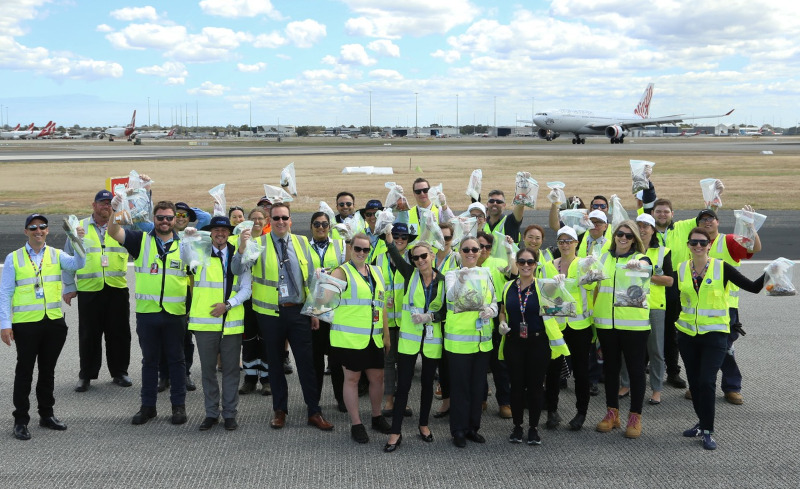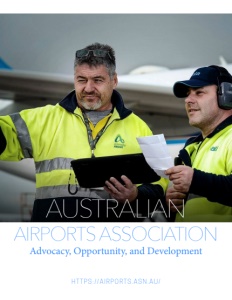Australian Airports Association
Advocacy, Opportunity, and Development.
Business View Oceania interviews senior representatives at the Australian Airports Association for our Aviation View of Australia.
The Australian Airports Association was kind enough to reach out to Business View Oceania with a comprehensive interview that covers the organization’s history, operations, priorities, projects, and plans for the future. Chief Executive of the Australian Airports Association, James Goodwin was more than happy to lend his voice to its members.
- Can you tell us a little about the history of Australian Airports Association? When and why was it founded? What were the regulations that AAA felt had to be filled, and has that mission changed over the years? What is the current mandate of the AAA?
The Australian Airports Association (AAA) is a non-profit organisation. It was founded in 1982 in recognition of the need for one coherent, cohesive, consistent, and vital voice for all aerodromes and airports across Australia. The AAA now represents the interests of more than 330 airports and aerodromes Australia wide, from your local country community landing strip to major international gateway airports. There are a further 120 corporate members within our ranks, and they represent aviation stakeholders and organisations that provide services to the airport sector.
The AAA facilitates co-operation among all member airports and their many and varied partners in Australian aviation, whilst contributing to an air transport system that is safe, secure, efficient, and environmentally responsible. This is for the benefit of all Australians and visitors. The AAA is also the leading advocate for appropriate national policy relating to airport activities, and operates to ensure regular transport passengers, freight, and the community enjoy the full benefits of a progressive and sustainable airport industry.
The impacts of the COVID-19 pandemic on Australia’s airport sector mean the voice of our association is now more important than ever. Advocacy is always front of mind, whether it’s at a local or national level. It is crucial our members are supported, no matter what their issue may be.

- What is the size of Australian Airports Association’s staff? What are their main priorities? Does the AAA have any major changes planned for the near or long-term future?
The AAA is a small but influential team. The main priorities of the AAA are of course our members; we will continue to lead through targeted and strategic policy and research, data analysis, and technical advice. We will advocate for and on behalf of our members to governments, to the Opposition, through the media and other key stakeholders. We will also continue to educate our members through our annual National Conference, which will be held in Sydney in November, and through other industry events such as the recent Pavements and Lighting Forum which was held on the Gold Coast in May, online education courses, and professional development opportunities.
Our sector’s top issue currently is the fight to recover from ongoing impacts of the pandemic. Australia’s aviation industry was hit first, hit hard, and will be one of the last to recover, with airports collectively losing $320 million of a revenue a month during the peak of COVID-19. More than 75% of the workforce lost their job, were put on reduced hours, or were moved to another sector. Once Australia’s current Delta outbreak gets under control and vaccination levels increase, our advocacy efforts will shift to working with our government, so that we can slowly and safely reopen Australia’s international border and kick start the domestic tourism economy.
- What does the landscape look like for the aviation industry over the coming decade, and how important is commercial, international, and general aviation to the economy of Australia? How will the Australian Airports Association continue to be a viable voice for the industry?
Domestic passenger numbers at airports in May 2021 were sitting in their strongest position since the pandemic began; 70% of pre-COVID levels. The outbreak of the virus’s Delta variant across Sydney, Melbourne, and Adelaide in June and July has taken the airport sector back to square one, with domestic passenger numbers at our major airports dropping to just 47%. This sharp decline was felt in a matter of weeks and shows the fragility of recovery in our sector. While a strong domestic tourism market is important, it will never fill the gap of international visitors. The fact remains that overseas tourists spend three times more than domestic travellers, and the reality is, until international borders reopen, Australia will continue to lose $250 million from the economy every day.
The Australian Government has recently proposed a four-phase plan to slowly and safely reopen our nation to the world. While the airport sector strongly supports this and it’s good to have a plan in place, we are still yet to see any vaccination targets or time frames for this reopening. The government made an assumption in its 2021/2022 Federal Budget Papers that international travel would not resume before at least mid-2022. Realistically, we don’t expect international travel to return to pre-pandemic levels until at least 2024.
Airports want to work with the government to formulate a plan that will take a safe, risk-based, and phased approach to opening our international border, so that we can continue to support the broader Australian economy through pandemic recovery. We absolutely need to start reconnecting global business partners, attracting seasonal agricultural workers and international students, and increasing the capacity for Australians to return home.

- What is the Australian Airports Association’s membership? Has the number changed significantly over the years, and if so, why? Are there different tiers of membership, including associate members from different industries? How do you communicate with your membership, and what are their benefits?
There are currently 330 member airports and 180 airport owners benefiting from their membership with the Australian Airports Association. We also represent 120 corporate members who provide services to airports, such as construction companies, mining companies, lighting businesses, and security screening agencies. There are six different tiers of membership, including:
- Small Regional Airport
- Regional Airport
- Metro Airport
- Major Airport
- Capital City Airport
- Corporate
The AAA provides a range of services to its members. These include providing a unified voice when advocating for the sector to Government and other organisations, advocacy on other issues of concern at local and national levels, opportunities to develop professional skills and networks through our division meetings, working groups and events, communications via e-newsletters and our online members centre to inform members of the latest industry news, and the opportunity to be recognised for excellence in our National Awards program.
We communicate with our members through a range of channels, including:
- A weekly newsletter
- Regular phone calls
- MailChimp
- Monthly webinars
- CEO messages via email
- Chair messages via email
- Social media
- Video conferencing
- Email Direct Marketing (EDMs)
- What are the salient points that you would like a reader to take away from the Australian Airports Association’s contributions to the Aviation industry?
The Australian Airports Association’s advocacy strategy was instrumental in securing government support for Australia’s Aviation Sector during the pandemic. The Association’s 2021/2022 Federal Budget Submission resulted in the sector receiving around 80% of its Federal Budget request, including an extension of the Domestic and Regional Aviation Network Support programs which subsidise empty seats on aircraft to keep the national aviation network operational, the Domestic Airports Security Costs Support (DASCS), which provides rebates to airports for mandatory security screening services, and the development of the Tourism Aviation Network Support (TANS) program, which funded half-price airfares to select tourism destinations across Australia.
The AAA recently successfully advocated for a further $64 million to support the security screening costs for international aircraft and passengers as we prepare to welcome back overseas travellers and is currently in conversation with the Australian Government on a program to provide more support to airports continuing to do it tough with next to no passengers passing through the terminal.
The AAA will continue its role in being a strong and united voice for Australia’s airport sector. We will do all we can to achieve government support and recognition that will help pull the industry, and subsequently the whole of Australia, through to the other side of the pandemic
AT A GLANCE
Australian Airports Association
What: All-encompassing representation for members within the Australian Airport sector.
Where: The Australian Airports Association is headquartered in Canberra, Australia.
Website: https://airports.asn.au/



